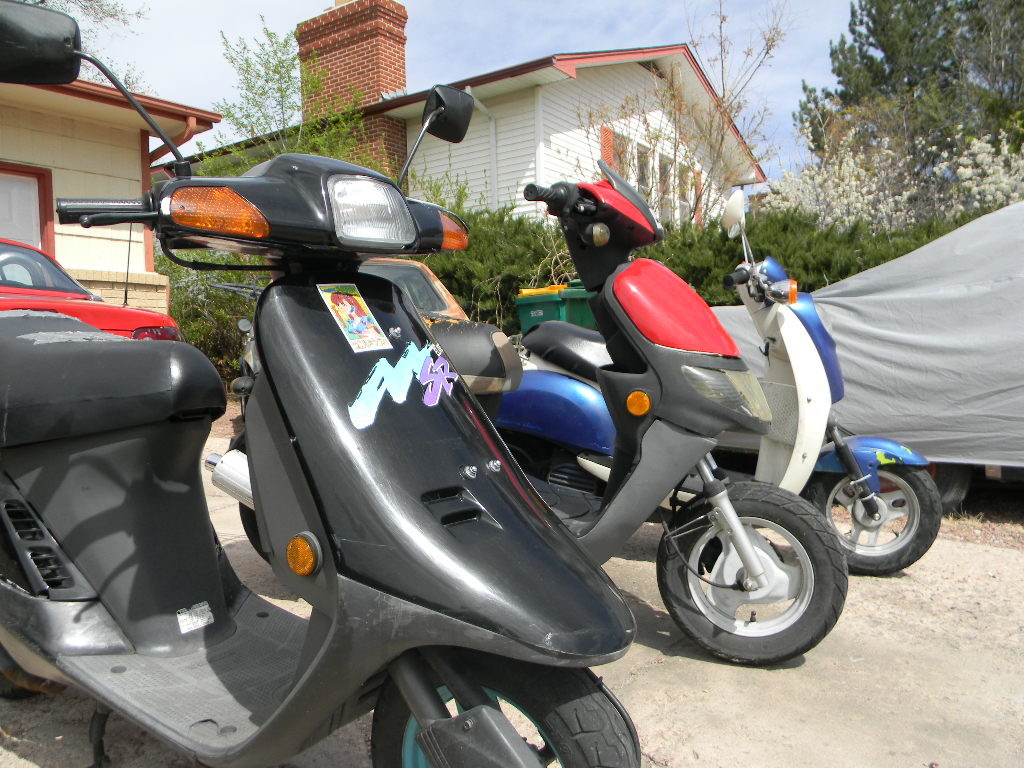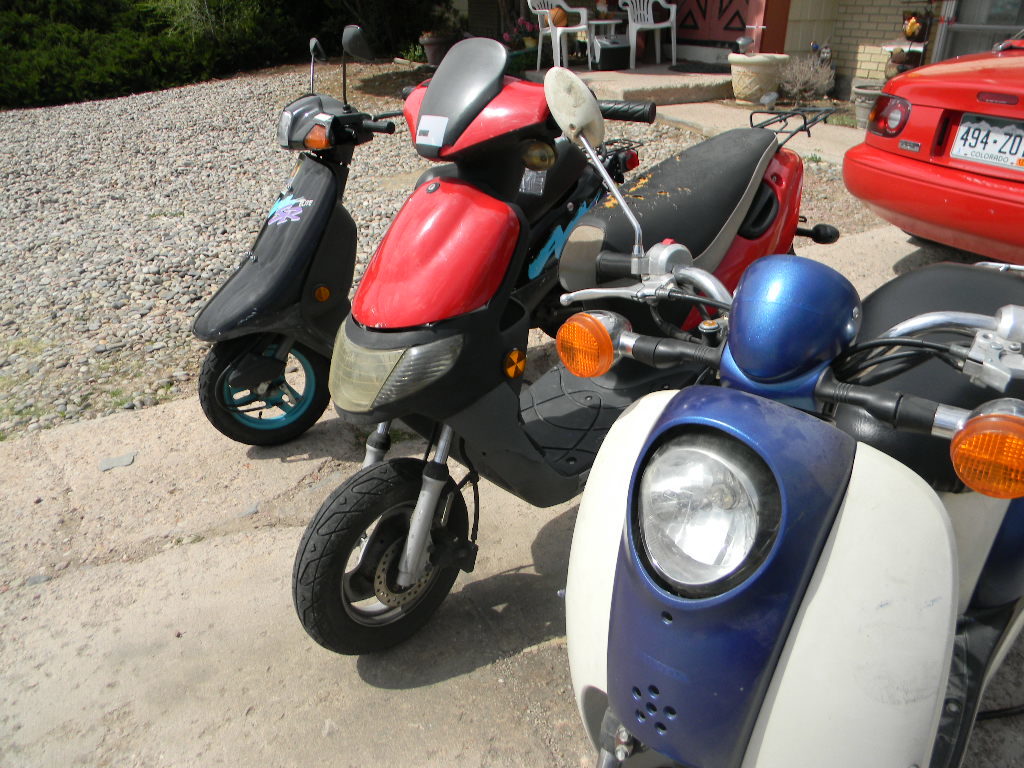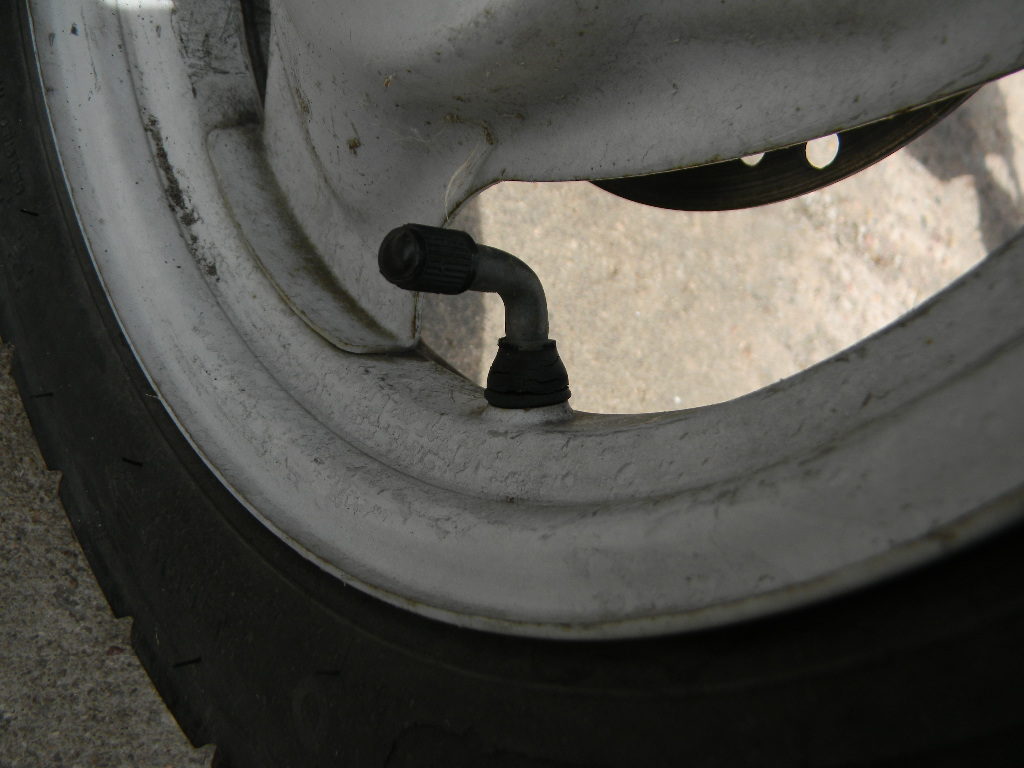Used Scooter Buyer’s Guide: Chinese Scoots vs. Japanese Scoots
“What kind of scooter should I get?”
“Who makes the best scooters?”
In addition to getting asked these questions all the time, I also hear “Jeez, I wish I would have talked to you before I bought this Chinese piece-of-shite!”
I don’t begrudge people who buy Chinese scooters. Many savvy consumers do their research and still decide to buy Chinese scooters. The Chinese scooter solves a problem for them. They no longer have to walk around at the equestrian events they frequent. They can scoot around at the race track between heats. A Chinese scooter is the least expensive form of motoring transportation money can buy. For the money, Chinese scooters can be quite good, assuming you don’t end up with a lemon.
Based on my very informal study of Chinese scooters, lemons tend to be the exception rather than the rule. The vast majority of Chinese scooters can be reliable and fun, as long as they are assembled and maintained in a competent manner.
Are they as good as Italian and Japanese scooters? Heck no they aren’t! Do they do everything that Italian and Japanese scooters do, at least 90% as well as they do it? That they do! As usual, however, the devil is in the details. The Japanese pay attention to detail when they build things. You can see it in everything they build. The Chinese? Not so much.
With all of that said, I have three scooters sitting in my driveway at the moment. Among them there’s an old, 1993 Honda Elite. There’s a Chinese scooter of unknown origin. And, finally, there’s a 2007 Honda Metropolitan. Which one is the best of the bunch? Is it the newer Honda, like you might expect? Is it the old Honda? Or is it the Chinese scooter? Here they are:


Looking at them lined up like that, who knows which one is half decent? It’s hard to tell! So let’s dig a little deeper, starting with the gauges.

Despite being 24 years old, the Honda Elite’s gauges can be read easily and clearly. The same is true for the ’06 Honda Metropolitan on the right. Look at the Chinese scoot in the middle though. The gauges are cloudy beyond all recognition. It might not even be possible to clear those gauges up, regardless of how much time I spend on them. If you want to be able to read your scooter’s gauges, the Japanese scoots win by a huge margin.
Now let’s look at the general appearance of the scooters.

Graphics are a big deal in the powersports industry. Sometimes the only change made to an existing model from year-to-year is the dreaded “bold new graphics.” But graphics kind-of-sort-of point toward how much thought went into the scooter itself. On the old-skool Honda Elite, we get “bold” graphics in black, teal, and purple shades. The Chinese scoot and the newer Honda scoot don’t have much in the way of graphics at all. Maybe it was just a 90s thing? I love 90s things. That’s the era I grew up in, so there’s a special place in my heart for the high-church-of-neon.
If you had to make a choice based on graphics alone, you would buy the old-skool Honda scoot over all the rest.
But appearances are just that: appearances, and graphics are skin deep. Let’s look a little closer, now with the taillights:

See how the Chinese scoot’s blinkers are cloudy? How well do you think that Hummer H2 driver can see those things on the open road? Not very well at all would be my guess. But what about the Hondas, both the Elite and the Metropolitan? The Elite has a clear taillight and clear blinkers even though it’s pushing 24-years-old. The Honda Metropolitan still has a perfectly clear set of rear blinkers as well, despite being over 10-years-old. But what about the China scoot in the middle? The lights have gone cloudy, and it’s a toss-up as to whether they’ll clear up ever again regardless of how much work I put into them.
Now let’s look at some really important ‘ish. Your tires are your last link between you and the road. The air goes into them through a valve stem. Valve stems are important. If they go, the whole wheel goes. So let’s look at these three bikes’ valve stems.

Let’s have a look at that one in the middle, the China scoot, how those valve stems look:

Look closely, and you’ll see a heck of a lot of dry rot on that China scoot’s valve stems.
That means the valve stem, thus the tire, can go at any moment. One second you’re riding along at a nice clip, the next second you’re cruising along on flat tires. When they go from full to flat, all kinds of no-good-very-bad-things can happen. It could happen while you’re riding. It’s a good idea to change the valve stems on any kind of China scoot you plan on riding.
You’ll notice the early Honda has metal valve stems, and the newer Honda has solid-looking rubber valve stems. Both of these configurations work equally as well, but guess which one’s going to be more reliable? The valve stems on the early Honda aren’t quite as subject to wear and breakage as either the Chinese or the later Japanese scooter’s are.
The bottom line is Japanese scooters hold up better over the years than just about anything else. Now let’s talk about these scooters’ engines.
2T & 4T Japanese Scooters
The ’93 Honda Elite is powered by a stupid-simple two-stroke (2T) engine. This means the spark plug fires and an explosion sends the piston rocketing downwards every single time it reaches top-dead-center (TDC). 2T scoots and motorcycles tend to make more power than those powered by four-stroke (4T) engines of the same displacement.
In other words, a 50cc 2T scooter will be faster than a 50cc 4T scooter. Speaking of 50cc 4T scooters, let’s talk about the much newer Honda Metropolitan, “Met” for short.
It’s liquid cooled. It has a throttle position sensor. The engine’s cases “clam shell” over the crankshaft, not unlike the way modern sportbike engines are designed. It has a very clever starter. The frame is made out of aluminum. It has an electronic fuel pump.
The Met is also as slow as the day is long and, because you can’t simply unbolt the cylinder from the cases, there’s not much you can do about how slow it is!
The ’93 Honda has a 70cc big-bore-kit. The kit took about 2 hours to install. It does wheelies. It is much, much faster than the ’06 Honda Met. I reckon it is just as reliable.
Another good, used 2T Japanese scooter to look for is the Yamaha Zuma.
4T Chinese Scooters
They suffer from all of the build quality issues discussed earlier in this post. Their one saving grace is the fact that the engines are, in fact, really quite decent.
And you can make them faster easily by installing a big bore kit. A Chinese scooter will never “feel” like a Honda Metropolitan going down the road, but a Chinese scooter with a big bore kit installed will go faster than most Honda Metropolitans and Ruckuses.
Final Recommendations
Chinese scooters are good for occasional use, like at an equestrian event or as a pit-bike at the races. For every day road use, I recommend buying a Japanese scooter.
If you plan on keeping it stock, look for a nice, used Honda Ruckus or Metropolitan. 4T Yamaha scooters are available as well, and they are just as good if not better than the Hondas.
If you want to go fast, try to find a ’94-’01 Honda Elite with the “DIO” or AF16/18 engine. Failing that, find a Yamaha Zuma with the horizontal engine. The ones with vertical engines are plenty cool, too but the parts aren’t quite as plentiful.
Have fun and stay safe out there!